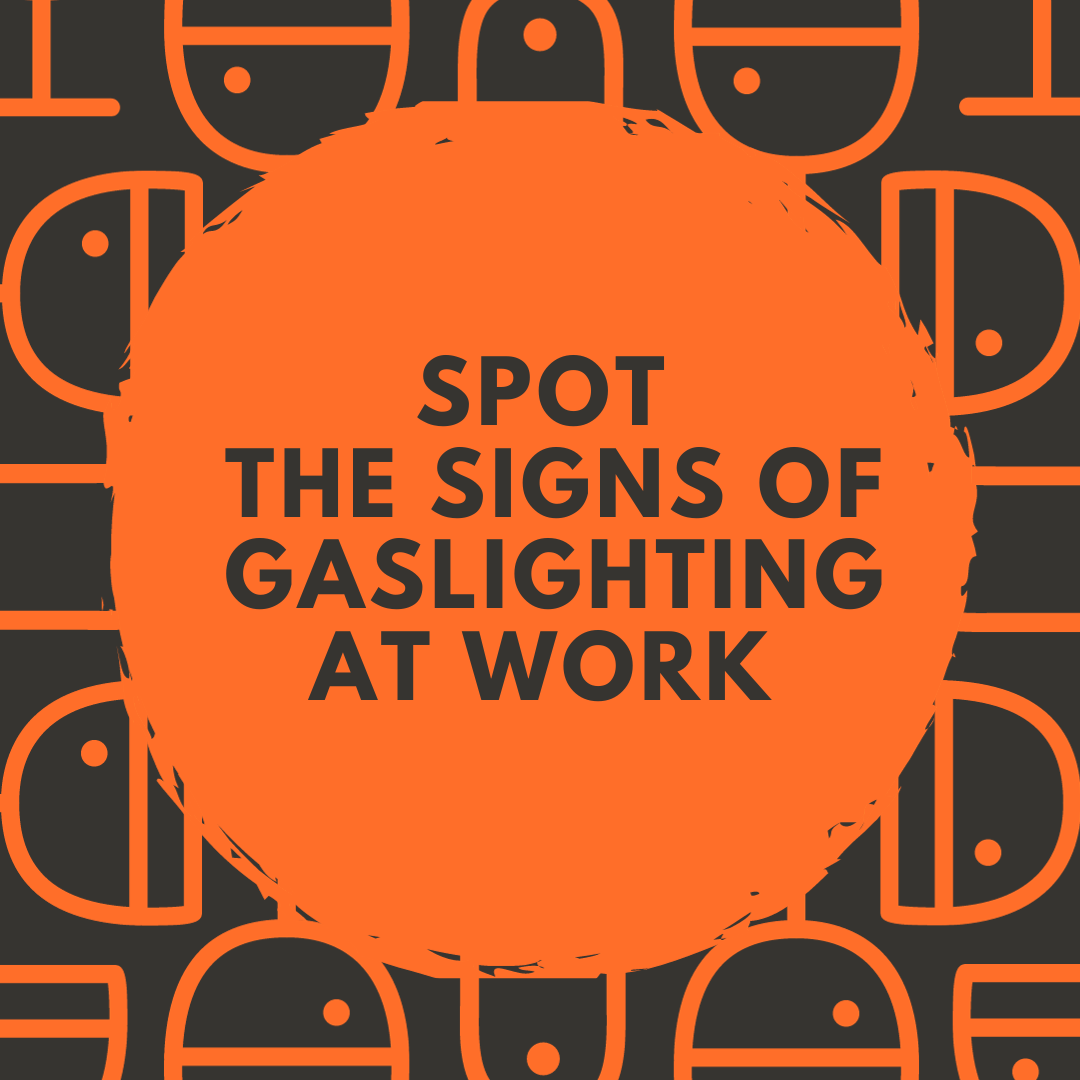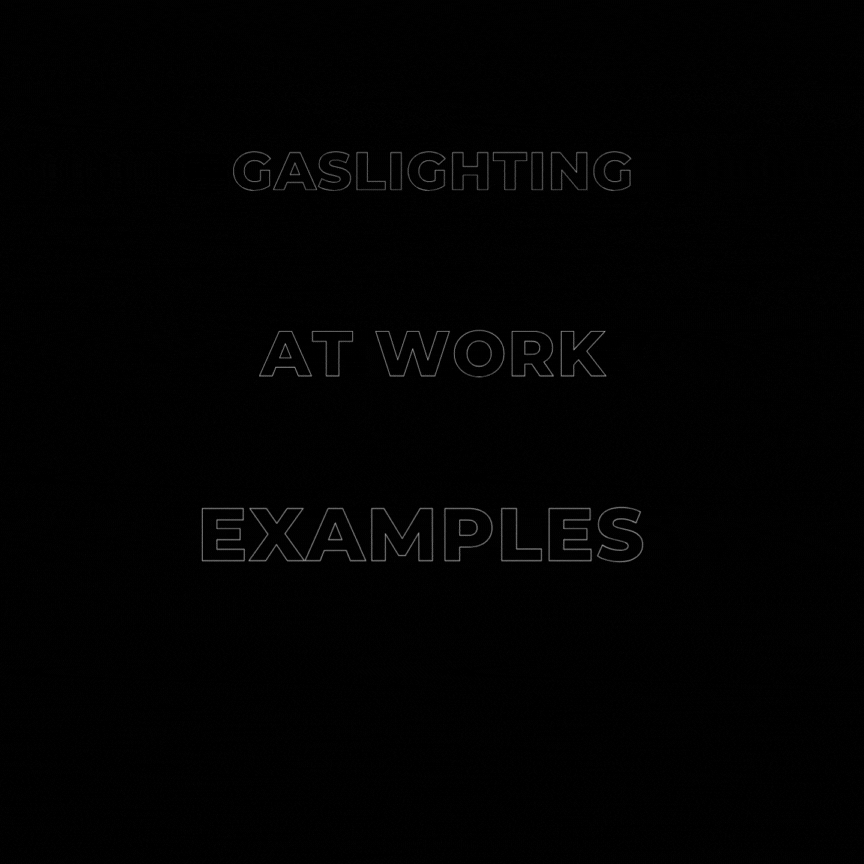How to Unmask and Overcome Gaslighting in Your Workplace
Unmask the hidden manipulator at your workplace. Our comprehensive guide on overcoming gaslighting equips you with the knowledge and tools to stand up against this psychological manipulation.

The definition of gaslighting at work implies a form of emotional manipulation that sows seeds of doubt and confusion in the victim.
Indeed, it can be particularly insidious when it infiltrates the workplace.
This blog post aims to arm you with the knowledge and strategies you need:
- to identify
- to confront
- to overcome gaslighting in your professional environment.
A Journey to Overcome Gaslighting at Work
How to Recognize Signs of Gaslighting at Work: The Wolf in Sheep's Clothing
🐺🐑In non-work settings, gaslighting often happens between two people who are more equal in power to make the victim question their own sanity or perception of reality.
However, there are some key differences between gaslighting in the workplace and gaslighting in other contexts.
What is gaslighting at work
Gaslighting at work often involves someone in a position of authority using manipulative or deceptive tactics to make their subordinates doubt themselves and their perceptions.
This can include:
- making them feel incompetent or overreacting
- questioning their memory of events
- denying things that happened.
How does gaslighting work?
Here are five common phrases that gaslighters at work might use:
- "You're being too sensitive."
- "You're not remembering it right."
- "That never happened."
- "If you were better at your job, this wouldn't have happened."
- "You must be imagining things."
These phrases are all designed to make the person being gaslit feel like they're the problem and that they're not a reliable witness to their own experiences.
If you hear someone using these phrases, it could be a sign that they're trying to gaslight you.

10 signs of gaslighting at work
Workplace gaslighting may, however, be difficult to identify.
This is why we are going to explain it with the help of some simple examples:
1. Moving the goal posts: It is like a game, and the goal posts are constantly changing. Gaslighters predetermine strict targets; hence, you will always be underperforming because they keep changing the rules.
2. Silent treatment: Gaslighters may leave you out, not share information as a way of making you feel unworthy so that they can manipulate.
3. Distorting reality: They distort reality, alter stories and claim that they did not do things. This leaves you doubting what you perceive as reality.
4. Blame game: Imagine a game in which you are throwing around blame like a hot potato. Gaslighters will put their blame on you.
5. Buzz killing: Gaslighting reduces your confidence like the air out of the balloon, leaving you feeling that you were not good enough.
6. Discrediting and sabotage: To damage your trust, gaslighters will either defame your name, lie, or take credit for your work.
7. Guilt tripping: This is where they manipulate your feelings by making you feel guilty about the outcomes, even when you did your best.
8. Revisionist history: Just suppose that someone were to write in your personal diary. Gaslighters remake reality by distorting things written in history, refusing to talk about something that happened, or twisting the situation to make you think you are in the wrong.
9. Denial of validation: Gaslighters never offer you validation; you never know whether you did something good or not, whether you are worthy or not.
10. Cutting you off: Gaslighters isolate you, distancing you or cutting connections with your colleagues, friends, or mentors so that you have fewer and fewer people who could support you.
If you notice these symptoms, stop and analyze the situation; otherwise, it can damage your self-esteem and work performance.
Why Do Gaslighters Manipulate? Understanding the Psychology and Motives
Gaslighting at work is like a skilled manipulator turning down the volume knob on truth.
💨♨️Gaslighters at work manipulate others to maintain control and power dynamics. Their primary motivations are personal gain, such as:
- career advancement
- validation
- desire to undermine the other person's efforts
- assert dominance over their targets.
They aim to discredit, fail to collaborate, manipulate, and exploit individuals for their own benefit.
Gaslighting can be seen as a calculated manipulation tactic rather than just one of the bad habits.
The typical scenario is gaslighting at work by the boss, but it can also happen the other way around, where a subordinate gaslights someone in a higher position. The dynamics might be a bit different due to the power structure, but the manipulative tactics remain similar.
In this scenario, a subordinate misses a project deadline and resorts to gaslighting the manager. Despite clear communication of the deadline, the subordinate denies its existence or importance, thereby making the manager question their own memory and judgment.
This manipulative tactic leads to mental fog and tilts the power dynamic in favor of the subordinate, undermines managerial authority, and risks creating a toxic work environment that erodes team cohesion and reduces the effectiveness of evaluation.
Gaslighting at work examples

🔍📈Unfortunately, gaslighting examples at work are numerous. Studies suggest that the impact of work gaslighting on productivity is largely understudied, yet it negatively affects work output.
There are cases of incidental and intentional gaslighting.
"Incidental" gaslighting is when the manipulator isn't aware of what they are doing, or their actions are the byproduct of the desire to control the specific situation or the result of stress and personal insecurity.
The distinction between incidental and intentional gaslighting hinges on whether the perpetrator acts knowingly or unintentionally. While both modes of gaslighting can cause harm, they occur under different circumstances and motivations.
Here are some examples of unintentional and intentional gaslighting at work:
Unintentional gaslighting
- A coworker tells you that you're being too sensitive when you express your concerns about their behavior.
- A manager uses phrases 'you are always', and 'you are never', which undermines self-esteem.
- A team member encourages you to only focus on the positive aspects of a situation, creating toxic positivity by disregarding the negative aspects.
Intentional gaslighting
- A coworker tells you that you're imagining things when you confront them about their inappropriate behavior.
- A supervisor creates a chaotic or inconsistent environment where workers are unsure of rules. This can involve contradicting statements and changing narratives.
- A colleague lies to you about your performance reviews and then tells you that you're misremembering things.
- A team member sabotages your work and then accuses you of being incompetent.
- A subordinate steals your ideas and then presents them as their own and then tells you that you're being paranoid when you accuse them of plagiarism.
How to Deal with Gaslighting at Work
⚖️✅It is important to note that gaslighting can be very subtle, and it can be difficult to tell if someone is gaslighting you intentionally or unintentionally.
However, regardless of the intention, the impact on the victim is the same. Thus, gaslighting requires an actionable plan to overcome.
Below, we list tips on how to combat and stop gaslighting at work.
- Incorporate Emotional Intelligence Tools. Gaslighting can be deeply emotional and manipulative. Using emotional intelligence frameworks can help you not only understand your own emotions but also read the emotional terrain of your workplace, helping you navigate conversations and confrontations more effectively.
- Take care of yourself. Gaslighting can be emotionally and psychologically draining. It is important to take care of yourself during this time. Make sure to get enough sleep, eat healthy foods, and exercise regularly.
- Engage in "Calling In" Rather Than "Calling Out". When possible, engage the perpetrator privately first, giving them a chance to correct their behavior without becoming defensive. This approach is predicated on the idea that some people gaslight unconsciously and could respond to a wake-up call.
- Preemptive Transparency. Before a project or meeting where gaslighting could occur, clearly outline your contributions, expectations, and concerns to relevant stakeholders. This preempts any attempts to undermine or discredit you later on.
- Use tools to optimize work routines. Utilize work tools that promote efficient time management and prioritize mental health. For example, you can try TMetric for work life balance which will also keep a full record of your work, including emails, documents, and presentations. This can help you to show that you are meeting expectations and that any criticisms of your work are unfounded.
- Foster an environment of dignity and mutual respect. Cultivate open lines of communication and empathy, both as safeguards against gaslighting and as instruments for change. If you find yourself subjected to gaslighting, don't hesitate to voice your concerns. Likewise, if you observe such manipulative behavior happening to others, offer your support actively.
How to prove gaslighting at work
Proving gaslighting at work can be challenging since it is a subtle and manipulative form of behavior.
However, here are some steps you can take to gather evidence and document the gaslighting.
Identify the toxic patterns. The first step is to be able to identify the gaslighting behavior. Some common signs of gaslighting include:
- Denying or contradicting things that you know happened.
- Trivializing or minimizing your feelings and experiences.
- Blaming you for things that are not your fault.
- Making you feel like you are crazy or imagining things.
- Isolating you from other people.
- Controlling your access to information and resources.
If you are experiencing any of these behaviors from a coworker or supervisor, it is important to follow the next steps.
Keep a record. Maintain a detailed record of incidents where you feel you have been gaslighted. Include dates, times, locations, and descriptions of the incidents. Be as specific as possible about what was said or done to undermine your perception or reality.
Examine company policies. Familiarize yourself with your company's policies on harassment and workplace behavior. Look for any specific provisions related to gaslighting or creating a hostile work environment. This can help you understand what actions may be considered inappropriate or against company rules.
Gather witnesses. If you can get third-party validation from witnesses who are willing to make a statement for your defense or testify if needed, their testimony will strengthen your case and ensure actions on the part of the employer.
Report to HR or management: If the gaslighting persists or escalates, report the incidents to your Human Resources department or management team. Present your documented evidence and request their intervention to address the issue.
Conclusion
Successfully identifying and confronting gaslighting in the workplace not only liberates you from emotional manipulation but also creates a more ethical and transparent work environment for everyone.
By equipping yourself with the right knowledge and tools on how to handle gaslighting at work, you can turn an emotionally toxic situation into an opportunity for personal growth and systemic change.
What is gaslighting at work?
Gaslighting at work is when someone lies, denies events, or makes you feel like you are overreacting in order to make you question your own reality.
How to recover from work gaslighting
1. Recognize the signs of gaslighting.
2. Trust your instincts.
3. Document incidents.
4. Seek support from trusted colleagues, friends, or family.
5. Set boundaries and assert yourself.
6. Practice self-care.
7. Consider seeking professional help if needed.
8. Remember, it's not your fault.
9. Take steps towards a healthier work environment.
Is gaslighting illegal at work?
Yes, gaslighting, which is a form of psychological manipulation, is generally considered unethical and unacceptable in the workplace.
However, the legality of gaslighting may vary depending on the specific circumstances, local labor laws, and the severity of its impact on the individual targeted.
